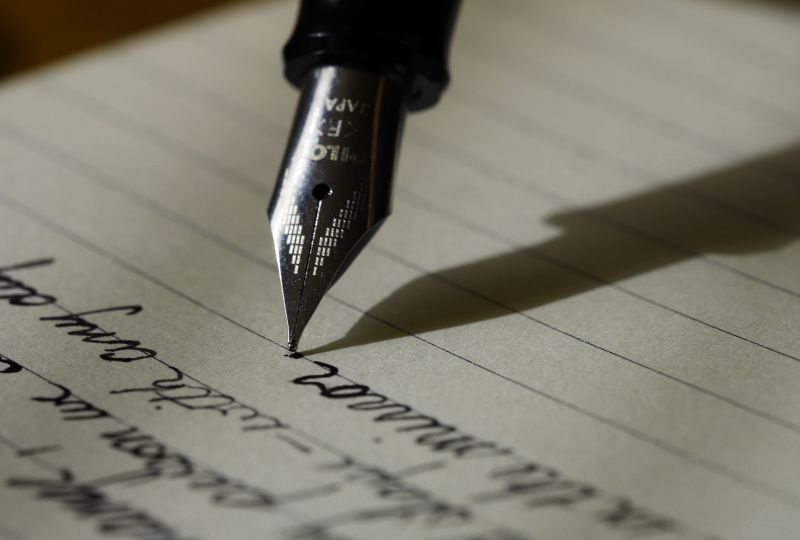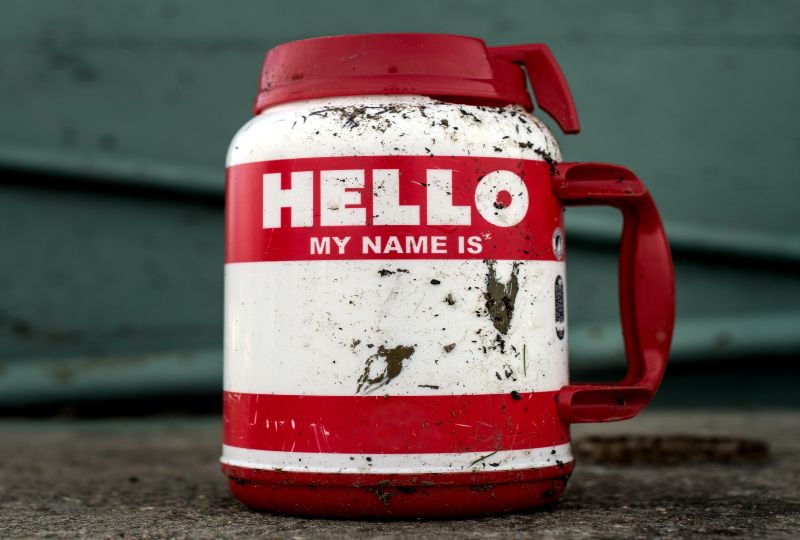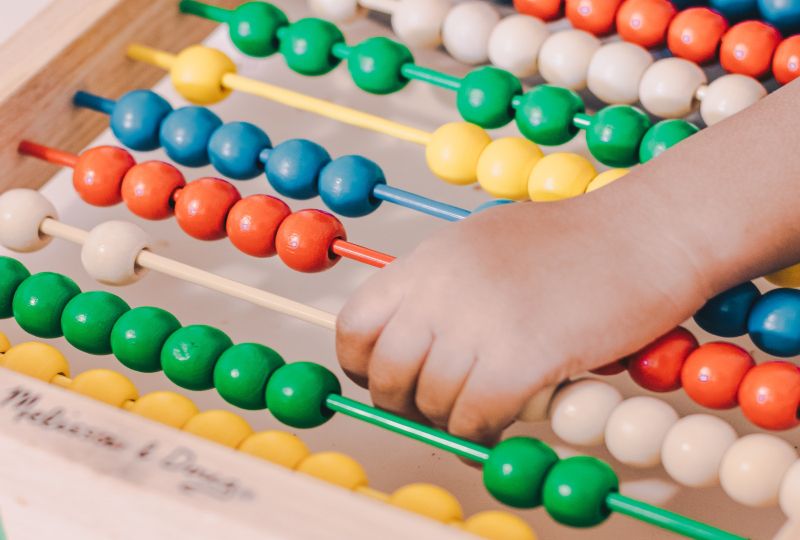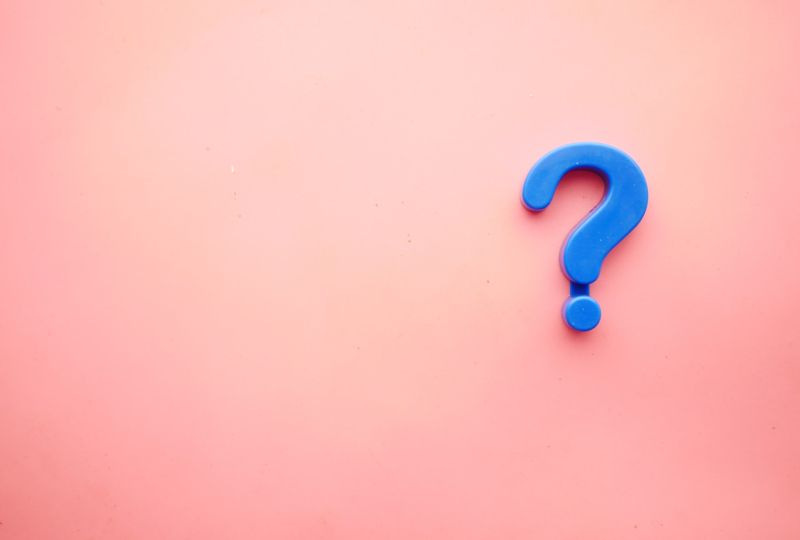10 Grammar Tips for Chinese Beginners

Every one who has tried to learn a new language has probably experienced the frustration of wanting to say something, knowing all the right words, but just not being able to put them together in the right way. Chinese is no exception with rigid grammar structures and words like 了 (le) that seem like they are designed to be confusing. And how on earth do you tell the difference between 有 and 的?
Ok. Take a deep breath. Remember that EVERYONE gets confused about a few (or many) things when starting to learn Chinese. To help you stay sane, here are a few grammar tips and explanations!

Top 10 Tips For Learning Chinese Grammar
When starting to learn Chinese the wide variety of grammar patters can be overwhelming. This list of tips should help you understand some of the most common grammar patterns and give you some extra ideas to boost your language journey!

1. General Sentence Structure
Before we try to implement any new grammar patterns, let's figure out what the structure of a Chinese sentence looks like. Fortunately for native English speakers, and most speakers used to romance languages, Chinese uses a very familiar sentence structure of Subject-Verb-Object or SVO for short. An English example of SVO is “I ate fish.” where "I" is the subject, "ate" is the verb, and "fish" is the object. This sentence in Chinese is essentially identical, “我吃鱼” (wǒ chī yú). "我" is the subject, "吃" is the verb, and "鱼" is the object. Pretty simple!
A subtle difference in sentence structure that you will encounter fairly often is where you place words pertaining to time. Many of us are used to the flexibility of English where it makes sense to say both “Yesterday, I ate fish.” and “I ate fish yesterday.” However in Chinese it is better to put the time words at the beginning of the sentence like this “昨天我吃鱼” (zuótiān wǒ chī yú) or “Yesterday, I ate fish.”
Here are some simple sentences:
- 下个周末我开车 (xià gè zhōumò wǒ kāichē): I drive next weekend
- 她出去学校 (tā chūqù xuéxiào): She goes to school
- 上周我的爸爸做饭 (shàng zhōu wǒ de bàba zuò fàn): last week my dad made food

2. Formal Names and Titles
This is simple but it trips up a lot of beginners. In a formal setting Chinese speakers state a person's family name, or surname, before the individual's first name. Essentially they switch the order of the names. John Doe would become Doe John. Titles work much the same way. Instead of saying Dr. Wang, or Professor Li you would say 王医生 (Wáng yīshēng) and 李老师 (Lǐ lǎoshī). It's pretty simple but can be tough to remember so don’t feel bad if you forget every now and then! If you happen to be the curious type, Chinese naming conventions are really interesting!

3. Measure Words
Next let's talk about measure words. These can get a bit complicated but they are important to cover since you are going to be seeing a lot of them. They are everywhere in Chinese. What is a measure word? Put simply, they are a word that is placed before a noun to help describe the quality and/or quantity of that noun. They are used to connect a quantity to a noun.
It sounds daunting at first but once you get some practice they aren’t quite so intimidating. Plus, they are pretty easy to place in a sentence. They go between a quantifier/number, and the noun being quantified.
Here is the basic structure with some examples:
quantifier + measure word + noun
- 一个人(yīgè rén): Measure word 个
one person or a person - 六条鱼(liùtiáo yú): Measure word 条
six fish - 三张床(sānzhāng chuáng): Measure word 张
three beds
You may be wondering why the measure word changed in those different examples. This is because certain measure words can function like adjectives to describe something about the noun they are modifying. The word 条 is used to describe things that are long and skinny, and 张 is used to describe things that are long and flat. Unfortunately there is no easy trick to learning these, but with practice and memorization they will come to you much easier.
Here are some more examples of some common measure words and their pairings:
- 条 (tiáo): describes long thin things
小路 (xiǎolù) trail,路 (lù) road,蛇 (shé) snake, 鱼 fish, - 只 (zhǐ): describes smaller animals
狗 (gǒu) dog,猫 (māo) cat,鸡 (jī) chicken, 鼠 (shǔ) mouse - 张 (zhāng): describes wide flat things
床 bed, 纸 (zhǐ) paper,桌子 (zhuōzi) table,幅画 (fúhuà) painting - 个 (gè): describes people
人 (rén) person,朋友 (péngyǒu) friend,妹妹 (mèimei) younger sister,弟弟 (dìdì) younger brother - 本 (běn): describes things found/made in volumes
书 (shū) book, 字典 (zidiǎn) dictionary,杂志 (zázhì) magazine,
期刊 (qíkān) journals - 杯 (bēi): describes things that come in bottles
水 (shuǐ) water,酒 (jiǔ) wine,茶 (chá) tea,果汁 (guǒzhī) juice

4. Plurals
In Chinese, plurality can be achieved in a few ways. The first and easiest way is to add 们 (men) when using a noun or pronoun that refers to people. Another way is to specify the quantity of the noun by using a number and the correct measure word.
Using 们 is very simple. If you want to refer to a group of people just add 们 after the noun. To turn person into people change "人" into "人们!" Want to say hello to everyone instead of just one person? You can add 们 to 你好 (nǐ hǎo)and say 你们好 (nǐmen hǎo)! It is important to note that 们 is used with groups that aren’t counted. If you wanted to give a specific number of people, let's say three, you would just say 三个人 (sǎn gě rén).
Now let's use numbers and measure words. You’ve actually already seen an example of this earlier in the article! It's pretty simple: you say the number, then the measure word, then the noun. Some simple examples are “七条鱼” (qītiáo yú) or “五只狗” (wǔ zhǐ gǒu)
Quantities can be expressed through measure words as well! Let's say you want to talk about shoes which are usually referred to in pairs. There’s a measure word for that! 双 is often used to describe things that come in pairs. If you are trying to tell someone you have nine pairs of shoes you can say “我有九双鞋子" (wǒ yǒu jiǔ shuāng xiézi).
If you want to know more about counting in general check out this great blog post on Speechling's website!

5. How to Express Ownership and Possession
There are two main words beginners should know when trying to express that they have something. You can use the word 的 (de) to indicate that something belongs to you, or you can use the word 有 (yǒu) to indicate that you are in possession of something even if it doesn't necessarily belong to you.
的 is usually used when you want to say that something belongs to someone. “我的车” (wǒ de chē) says “My car.” “他的车” (tā de chē) means “His car.”
Here are some examples of how to use 的:
- 我的朋友 (wǒ de péngyǒu): My friend
- 她的家 (wǒ de jiā): Her family
- 他们的妈妈 (tāmen de māmā): Their Mom
有, on the other hand, is less possessive. It best translates to the word “have” and just shows that someone is holding or keeping something without necessarily owning it. “我有两本书” (wǒ yǒu liǎng běn shū) says that the speaker is in possession of two books, but does not indicate whether they own the books or not.
An example of how 有 indicates possession and not ownership is:
李旺有我的书 (Lǐ Wàng yǒu wǒ de shū): Wang Li has my book
In this sentence the book is owned by the speaker, but Wang Li is in possession of it.
Here are some more examples of 有:
- 我有一个朋友 (wǒ yǒu yīgè péngyǒu): I have a friend
- 他有五双鞋子 (tā yǒu wǔshuāng xiēzi): He has five pairs of shoes
To negate possession you can add 没 in front of 有. Some examples of 没有 are:
- 我没有我的功课 (wǒ méiyǒu wǒ de gōngkè): I don’t have my homework
- 她没有一只狗 (tā méiyǒu yī zhǐ gǒu): She does not have a dog

6. How to Use 了
It’s amazing that such a little word can cause so much confusion. There are a lot of uses for 了 (le) but for now let's focus on two of them. The first use is to demonstrate completion, and second is to emphasize a change in condition.
To demonstrate completion put 了 after the action that was completed:
- 我吃了晚饭 (wǒ chīle wǎnfàn): I ate dinner.
- 他写了他的名字 (tā xiěle tā de míngzì): He wrote his name
In both these examples 了 emphasizes the completion of an action and so they can also be read as “I finished eating dinner” and “He finished writing his name”.
To demonstrate a change in state use 了 after the clause that indicates the new state:
- 她是大学生了 (tā shì dàxuéshēngle): She is a college student now.
- 妈妈没有一只狗了 (māmā méiyǒu yī zhǐ gǒule):Mom doesn’t have a dog anymore.
Without 了 the sentences read as simple statements but by adding 了 you indicate that the statement demonstrates a change.
Hopefully this helps to clarify some of the ways that you’ve likely encountered 了!

7. Grammar Patterns for Giving Your Opinion
What is the point of learning a new language if you aren’t able to express yourself! These are great ways to answer questions in a class setting, or to offer your point of view to a friend:
- 觉得 (juédé): to think
我觉得你的家很漂亮 (Wǒ juédé nǐ de jiā hěn piàoliang): I think your house is very pretty - 知道 (zhīdào): to know
我知道我的电脑号码 (Wǒ zhīdào wǒ de diànnǎo hàomǎ): I know my phone number - 同意 (tóngyì): to agree
我同意,我也喜欢这本书 (Wǒ tóngyì, wǒ yě xǐhuān zhè běn shū): I agree, I also like this book - 比 (bǐ): used in simple comparisons
你的头比我的头大 (Nǐ de tóu bǐ wǒ de tóu dà): Your head is bigger than mine
There are tons of ways to get your opinion out there but these are some solid ways to get yourself started! If you just don't know what to discuss maybe look into some Chinese history, even some philosphy!

8. How to Say Thank You
This one is not as straightforward as you might think! Yes you can simply say thank you using 谢谢(xièxiè). It’s perfect if someone has just done you a little favor, however, in the wrong context a simple thank you can make you seem ungrateful or even arrogant. In a culture that holds humility in such high esteem, having a wide variety of ways to demonstrate thanks is a good idea.
Here are some fun ways to say thank you:
- 哪里哪里(nǎlǐ nǎlǐ): Where? Where?
This is one of my favorite phrases in Chinese. It’s used when someone offers you a kind compliment like saying you are handsome or pretty. In just two words you are basically saying “Where is this person you are saying such nice things about because it certainly can’t be me!” - 你太好了(nǐ tài hǎole): You are too nice!
This is a great way to express gratitude while drawing attention to the generosity of the person you are thanking. - 不是不是(bùshì bùshì):No! No!
This is another cute way to accept a compliment. It emphasizes humility by basically outright denying whatever nice thing was said about you. - 多谢(duōxiè):Thank you so much!
You will usually encounter this in informal settings or among younger crowds. 多 is often used to express the idea of lots or many so it's also like saying, “Many thanks!”
There are plenty of ways to say thank you but hopefully these fun choices will keep you sounding grateful while you do more exploring!
If the thought of conversation or interaction sounds daunting check out some more of Speechling's guide like this one on how to talk to strangers or this one about how to make friends in Chinese!

9. Greetings and Goodbyes
Giving the standard 你好 can sound stiff after a while. Plus native Chinese speakers often use other greetings that are either more fun or pertinent to a given situation. If you meet a new group of people, instead of sounding a like a robot and saying 你好 15 times in a row you can simply say 大家好 or 你们好. If you want to greet someone and ask how their day is going you could say 你好今天怎嘛样 or you you could be super hip and ask “你好吗?” instead!
Here are some different ways to say hello:
- 大家好 (dàjiā hǎo): Hello everyone
- 你们好 (nǐmen hǎo): Hello you all
- 您好 (nín hǎo): Hello, but should be used only when in formal settings
- 上午好 (shàngwǔ hǎo): Good Morning
While you are at it, try finding some new ways to say goodbye. Here's a list to get you started:
- 再见 (zàijiàn):See you later
- 我来了 (wǒ láile): I’m heading out
- 明天见 (míngtiān jiàn): See you tomorrow
- 拜拜 (bàibài): Bye bye

10. Common question words
Last but not least let's take a look at some question words! Being able to ask the right question can really help to get you out of a pinch whether you are trying to ask your teacher if you can go to the bathroom, or if you want to know how to get to your hotel from the airport.
Here are some examples of common question words and how to use them:
- 谁 (shéi): Who
他是谁? (tā shì shéi): Who is she? - 什么 (shénme):What
大家最喜欢的东西是什么? (nǐ zuì xīhuān de diànyǐng shì shénme): What is everyone's favorite movie? - 什么时候 (shénme shíhòu):When
我们什么时候去上班? (wǒmen shénme shíhòu qù shàngbān): When do we go to work? - 哪里 (nǎlǐ):Where
你的家在哪里? (nī de jiā zài nǎlǐ): Where is your home? - 为什么 (wèishénme): Why
你为什么不喜欢这部电影? (nī wèishénme bù xǐhuān zhè bù diànyǐng): Why do you not like this movie? - 怎么样 (zěnme yàng): How
你怎么样写你的名字? (nǐ sěnme yàng xiě nǐ de míngzì): How do you write your name?
Of course, there are other ways to ask questions besides just the question words! These are some more nuanced ways to ask a question:
- 好不好 (hǎobù hǎo): How to ask if something was good or not
他们的菜好不好? (tāmen de cài hǎobù hǎo): Is there food good? - 吗 (ma): Used to indicate a sentence is posed as a yes or no question. An improtant note is that 吗 cannot be used with other question words.
你看书吗? (Nǐ kànshū ma): Do you read books?
Now you should have a tool belt full of good ways to ask questions, but there are tons of words and phrases that will help you pursue your curiosities so don't be afraid to get out there!

You Just Learned Some Chinese!
Congratulations! You made it all the way to the end and hopefully you learned a thing or two about Chinese grammar.
One really nice thing about Chinese is that the rules are generally pretty uniform unlike English which has a never ending list of grammatical exceptions. Now sit back, pat yourself on the back, and congratulate yourself for sitting down and trying to figure all these grammar rules out.
If advice columns and blogs aren't enough check out Speechling's Chinese program. You can get personalized feedback offered by real language professionals!
